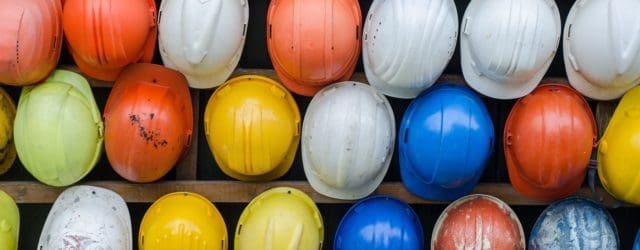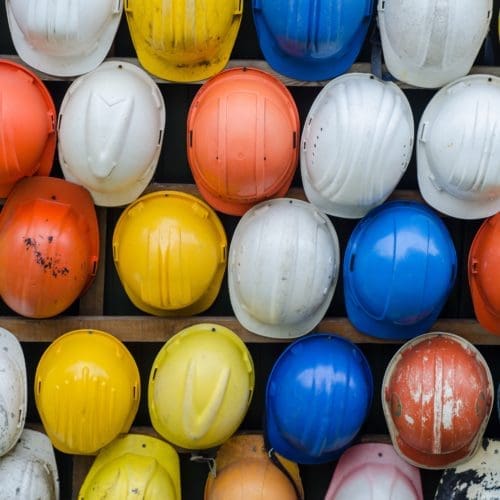Building Safety Act 2022: Focus on manufacturers
May 2022The Building Safety Act (“the Act”) received Royal Assent on 28 April 2022, and much of it is already in force or will be from 28 June 2022, including the Sections considered below.
The Act marks a significant step in the efforts to resolve the building safety crisis triggered by the Grenfell fire. It implements a new fire-safety regime intended to provide greater protection for leaseholders and occupiers going forwards. In addition, it makes some retrospective changes to the law, not least in relation to product manufacturers.
This article considers these issues with particular focus on manufacturers and suppliers and the potential consequences in the claims arena for existing residential buildings.
The Cladding Claim Landscape
Whilst the Government’s ‘Department for Levelling-Up, Housing & Communities’ (not the snappiest of names) has confirmed that 35 property developers have signed the Government’s pledge to fund cladding remediation and fire-safety upgrades as “a matter of urgency”, cladding and insulation manufacturers have to date failed to commit to such measures.
In a recent letter to the Construction Products Association (“CPA”), Housing Secretary Michael Gove said product manufacturers had used the scale of the problem as “an excuse to do nothing, slowly”. Mr Gove has promised to do “whatever it takes” to hold the sector to account. The new liabilities and limitation periods introduced by the Act represent active and significant steps towards achieving that objective. We examine sections of the Act relating to manufacturers below.
The Act: New Liabilities and Limitation Periods
Section 149: Liability for Past Defaults Relating to Cladding Products
Essentially, this Section imposes new and retrospective statutory liability for “past defaults relating to cladding products” if certain ‘Conditions’ are met.
Relevant definitions include “cladding product” – a cladding system or any component of a cladding system; and “relevant building” – a building consisting of a dwelling, or containing two or more dwellings.
Conditions A to D (not fully repeated here), notably require:
- Condition A: At any time before the Section came into force, a person:
(a) “fails to comply with a cladding product requirement in relation to a cladding product” (relating to the ‘Construction Products Regulations’); or
(b) “who markets or supplies a cladding product makes a misleading statement in relation to it;” or
(c) “manufactures a cladding product that is inherently defective”.
- Condition B: Once Condition A is met, the cladding product must have been “attached to, or included in, the external wall of a relevant building…” (which we consider would normally cover insulation materials contained within external wall systems, as well as rainscreen panels).
- Condition C: When the works are completed, the “…building is unfit for habitation”.
- Condition D: Requires that the factors contained within Condition A were “the causes, or one of the causes, of the building or dwelling being unfit for habitation”.
Pursuant to Section 149(6), where Conditions A to D are met, the relevant ‘person’, which can include a manufacturer or supplier of ‘a cladding product’, is legally liable to pay damages for “personal injury, damage to property or economic loss” suffered by “a person with a relevant interest in relation to the relevant building…”.
A person with a relevant interest would include a house owner, or an owner of a block of flats, or a lessee of a flat, pursuant to the definition of “relevant interest” (in Section 147).
In short, the Act creates potential new causes of action for residential building owners and/or leaseholders to pursue legal claims against product manufacturers and suppliers for ‘past defaults’ relating to cladding products, which otherwise might not be available to them in contract or tort or under existing statutes.
Condition A has 3 separate limbs and clearly leaves scope for argument – in particular as to what constitutes a “misleading statement”, or is “inherently defective”. These issues are not closely defined in the Act.
We suspect that, where Condition A(b) is argued, reference will be made to statements made within the Grenfell Inquiry in order to determine the threshold for what constitutes ‘misleading’. As has been widely reported, certain product manufacturers have faced heavy criticism concerning allegedly misleading statements regarding the properties and suitability of their products.
Condition C also leaves room for argument. For example, if there is limited use in a cladding system of a component which is not incombustible, does that make the building unfit for habitation?
Section 149: Liability Relating to Construction Products: Limitation
This adds to the Limitation Act 1980 a new Section 10B, which affords a “Special time limit for actions relating to construction products”.
Most notably, an “action under Section 149…shall not be brought after –
- if the right of action accrued before the commencement date, the expiration of the period of 30 years from the date on which it accrued, and
- If the right of action accrued on or after the commencement date, the expiration of the period of 15 years beginning with the date on which is accrued.”
The ‘commencement date’ is 28 June 2022, when Section 149 comes into force (under Section 170(3)(e), and new Section 10B(4)).
So Section 149 creates a retrospective limitation period of 30 years and a prospective limitation of 15 years, dependent on whether the ‘right of action’ accrued before or after that date.
Impact on Contribution Claims?
In addition to creating new rights of action against cladding manufacturers and suppliers for building owners and leaseholders, the Act potentially enables defendant contractors and consultants (architects, cladding subcontractors, etc) currently embroiled in ‘cladding disputes’ to pursue cladding manufacturers and suppliers in contribution based on the retrospective provisions of Section 149 referred to above.
Pursuant to Section 1(1) of the Contribution Act 1978:
“Any person liable in respect of any damage suffered by another person may recover contribution from any other person liable in respect of the same damage”.
In other words, the manufacturer or supplier from whom a Defendant is seeking a contribution must be liable for the same damage suffered by the Claimant (for which the Defendant is also liable).
Damages are apportioned “such as may be found by the court to be just and equitable having regard to the extent of the person’s responsibility for the damage in question”.
Before the Act, building owners bringing claims against contractors and/or consultants typically have not pursued claims against product manufacturers, without a direct contractual link between the two parties, and despite the possibility of claiming in negligent mis-statement.
Now, given that Section 149 of the Act creates a retrospective statutory liability between building owners and manufacturers (provided the Conditions are met), there is scope for defendant contractors/consultants to argue that the manufacturer is liable to the building owner “… in respect of the same damage” suffered.
So we expect to see these types of contribution claim increase. However, these claims may not be as straightforward as might appear at first blush and we anticipate fierce debate in certain areas. We explore some of these in the working example below.
Conversely, we also expect that, if cladding manufacturers are pursued by building owners under Section 149, manufacturers will seek to bring contribution claims of their own against any potentially liable contractor and/or consultant (which again will be subject to establishing that those parties are liable to the building owner for the ‘same damage’).
Working Example
An architect faces a claim from a building owner for breach of contract/negligence for designing/specifying a cladding system that is non-compliant with the relevant Building Regulations. The claim was issued before the Act came into force. The cladding system included combustible insulation about which the manufacturer had published marketing literature containing misleading representations.
Provided the ‘Conditions’ within Section 149 of the Act can be met, there is now scope for the Claimant building owner to bring a cladding product manufacturer into the claim.
In addition, the Defendant architect may consider pursuing a contribution claim against the manufacturer. To do so, the architect is likely to argue:
- The Act creates a retrospective liability between the manufacturer and the Claimant;
- That retrospective liability is owed to the Claimant in respect of the ‘same damage’ for which the Defendant architect is allegedly liable;
- The architect therefore has a cause of action to pursue the manufacturer pursuant to Section 1 of the Contribution Act.
Whilst sounding simple in theory, these contribution claims will not be without significant ‘battlegrounds’.
Under Section 149, the onus falls upon the architect to establish that Conditions A – D are met.
We expect there will be arguments, for example, in respect of Condition A over what constitutes a “misleading statement”, or whether a cladding product is “inherently defective”.
Take Condition A(b): the architect would have to establish that the manufacturer’s “misleading statement” caused the ‘same damage’ claimed by the Claimant building owner. The architect would argue that the ‘same damage’ was the unfitness for habitation of the building and the need to remediate the non-compliant cladding. The manufacturer might seek to argue that any misleading statement was not causative of this damage. Traditionally damages for negligent mis-statement are based upon putting the party back in the position they would have been in absent the mis-statement. Manufacturers may argue their statements were not causative of any loss. However, given that the whole purpose of this Section of the Act is to create viable claims against cladding manufacturers and suppliers, we can anticipate that the Courts may take a dim view of evasive arguments deployed by them.
Another area of debate will be whether and if so to what extent limitations of liability in the standard terms of manufacturers and suppliers might affect claims brought under the Act rather than in contract.
Commentary
We expect to see a rise in claims being brought by property owners against manufacturers and suppliers of cladding products within current disputes. We also expect defendant contractors and/or consultants to consider the merits of ‘bringing in’ manufacturers or suppliers via contribution claims. Many of these claims may end up being defended by insurers of manufacturers or suppliers. It is likely that there will be much legal debate about how the Act is to be properly interpreted and applied, but given the background to the Act we expect that the Courts may well be inclined to uphold claims against manufacturers and suppliers in which there are reasonable grounds for criticism of their marketing or the quality of their cladding product.
With thanks to Jeremy Nicholson QC of 4 Pump Court for his input into this article.
Download PDF






